
Yosemite Archives: YOSE-07962 After decades of delayed maintenance and low budgets, parks across America were struggling to keep up with rising visitation. In 1954, Yosemite National Park exceeded one million visitors for the first time, approximately double a typical year of visitation prior to World War II. Infrastructure was aging, and the park’s old stage roads were not built to handle modern vehicles. Low budgets and low staffing prevented the park from keeping up with growing visitor needs. These problems were common across parks nationwide in the post-war era. To tackle the growing crisis, National Park Service director Conrad Wirth initiated a large-scale program to revitalize the parks. This program, Mission 66, was a decade-long, billion-dollar effort from 1956 to 1966. 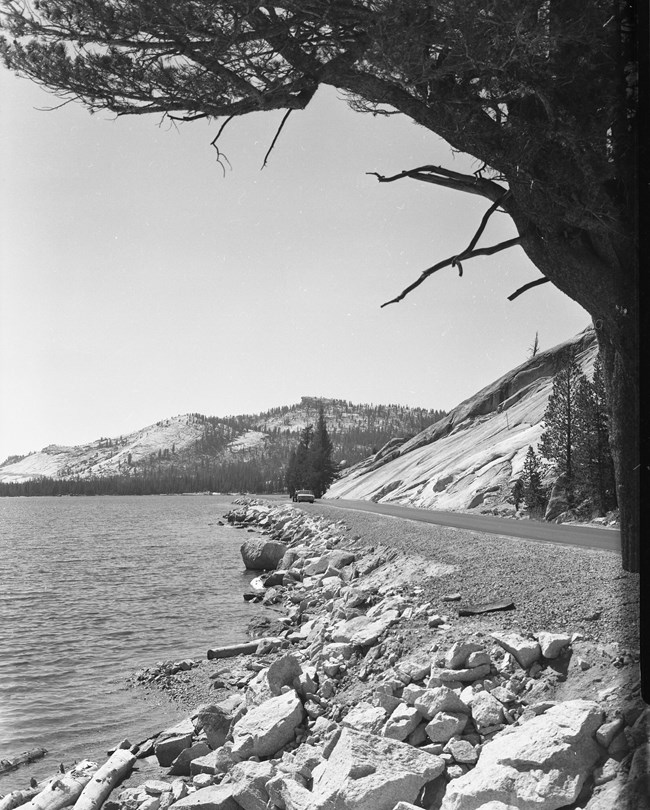
Yosemite is an ever-evolving cultural landscape with a rich history of both human inhabitation and recreational tourism. Before becoming the national park we know today, people have actively managed Yosemite for millennia: numerous American Indian tribes live in and around Yosemite, tending the land both before and after European contact. After European Americans reached the area in the mid-nineteenth century, human impact fundamentally changed. European-American settlers quickly began developing tourist accommodations, agriculture, mining operations, and more, while preventing American Indians from stewarding the land as they had for thousands of years. It would be several years before the park was protected by the Yosemite Grant in 1864 and, eventually, designated as a national park in 1890. Over the 100 years between the first hotel built by settlers in 1856 and the beginning of Mission 66 construction in 1956, a flurry of development had already swept across the park, especially in Yosemite Valley. With a long history of development for tourism, the geographical constraints of the ever-popular Yosemite Valley, and rising visitation, Yosemite presented incredibly complex management challenges. In 1956, Yosemite officials created a Mission 66 prospectus outlining just over $26 million worth of projects to overhaul the infrastructure of Yosemite to modern standards over the next decade. Adjusted for inflation, this proposal would have cost $292 million in 2023. Although the plans in the original prospectus would be revised many times, the Mission 66 era was a massive renaissance of the organization and harmonization of development across Yosemite National Park. The Mission 66 era included both government-funded efforts and significant investments from privately operated park concessioners. The National Park Service renegotiated concessioner contracts during Mission 66, enlisting the Yosemite Park and Curry Company to funnel millions of private dollars into development concentrated largely in the Valley. Even Mariposa County funded construction of a new schoolhouse in Yosemite Valley, which still serves the children of Yosemite’s families today. Work in Yosemite during Mission 66 included a wide array of efforts, not limited to new construction. Projects also included moving historic buildings, modernizing campgrounds, demolishing obsolete structures, acquiring land, reconstructing roads, and shutting down obsolete maintenance operations. Mission 66 brought an architectural style to Yosemite that blends modern motifs with mountain design aesthetics. Numerous Mission 66 buildings such as Degnan’s and the Village Store have elements reminiscent of European ski chalets as well as modern features like large window walls. If you’ve visited Yosemite since 1966, chances are you’ve personally experienced the impact of Mission 66. Whether driving along a realigned road, staying at a Mission 66 campground, enjoying the view from Sentinel Meadow, or even just using a Mission 66 restroom, the impacts of Mission 66 were far-reaching and long-lasting. Explore the history and architectural heritage of Mission 66 in Yosemite National Park below. 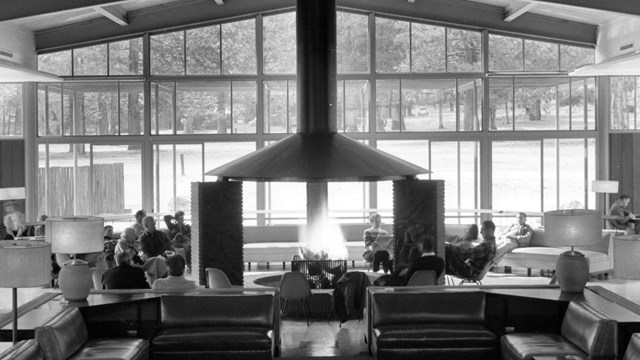
Yosemite Valley Lodge
Completed in 1959, architect Eldridge T. Spencer described the lodge as a "building of light." 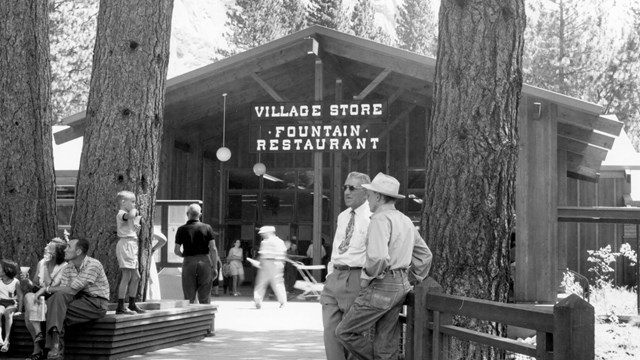
Village Store Complex
Now home to the Village Store, Village Grill, and Welcome Center, this multi-purpose building opened in 1959. 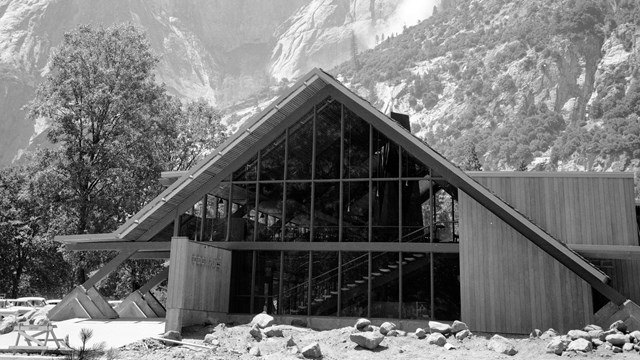
Degnan's Kitchen
From its humble beginnings as a cottage bakery run by Bridget Degnan, this iconic business lives on in a modern A-frame. 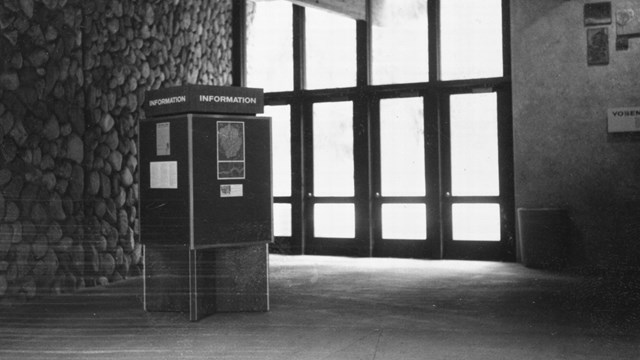
Yosemite Valley Visitor Center
From 1969 to 2023, this multi-purpose building served millions of visitors in Yosemite Village. 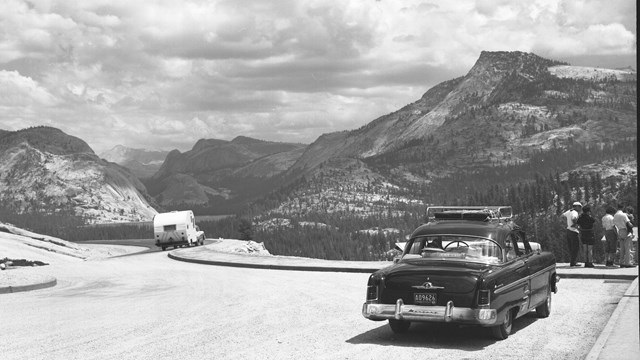
Reconstructing Tioga Road
The 21-mile section from White Wolf to Cathedral Lakes was the subject of heated controversy during Mission 66. 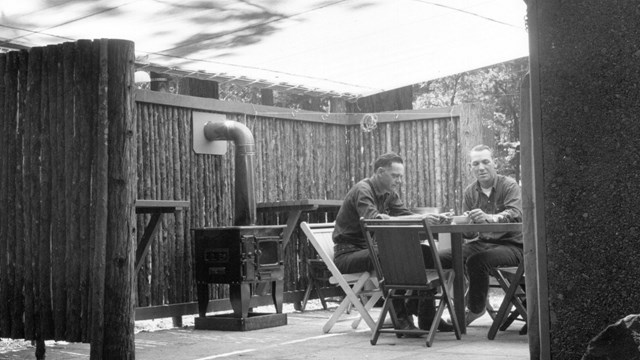
Campgrounds and Other Projects
To support the rapidly rising visitation, the park constructed hundreds of new campsites as well as behind-the-scenes infrastructure. 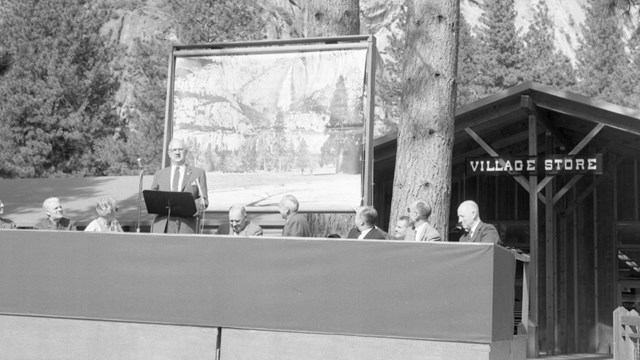
Mission 66 Photo Gallery
View a collection of historic photos from the Mission 66 program in Yosemite National Park. |
Last updated: October 20, 2023
